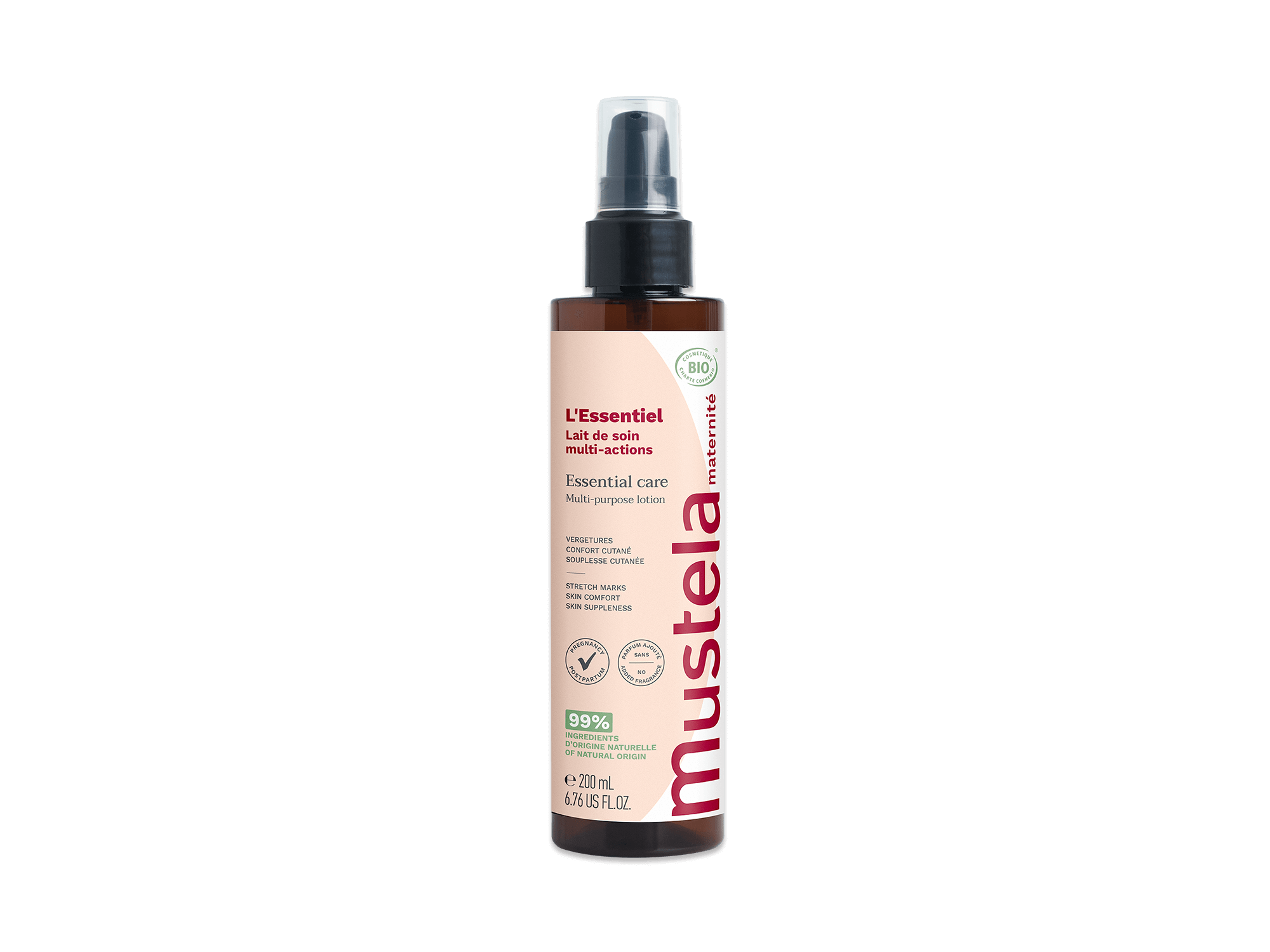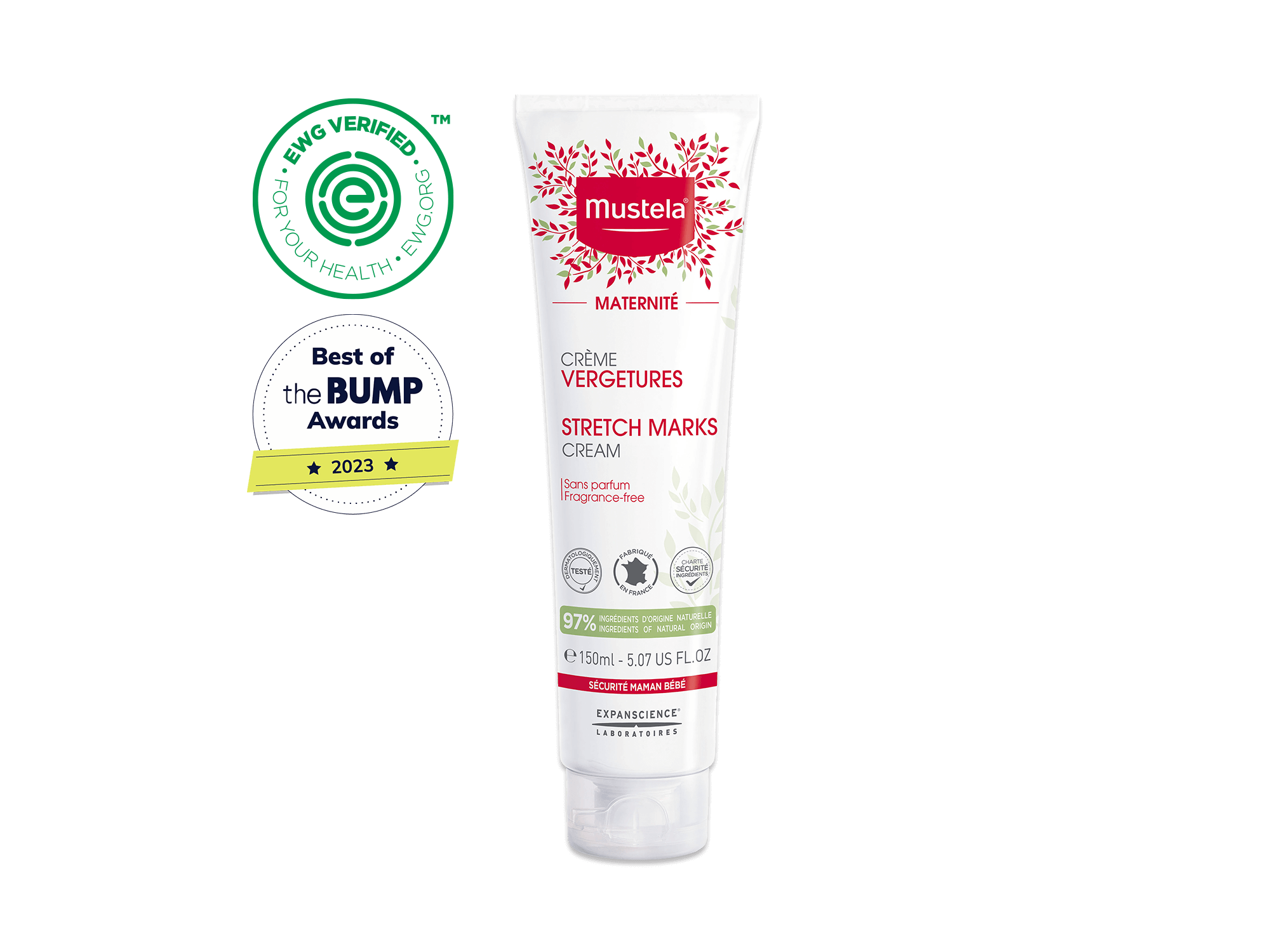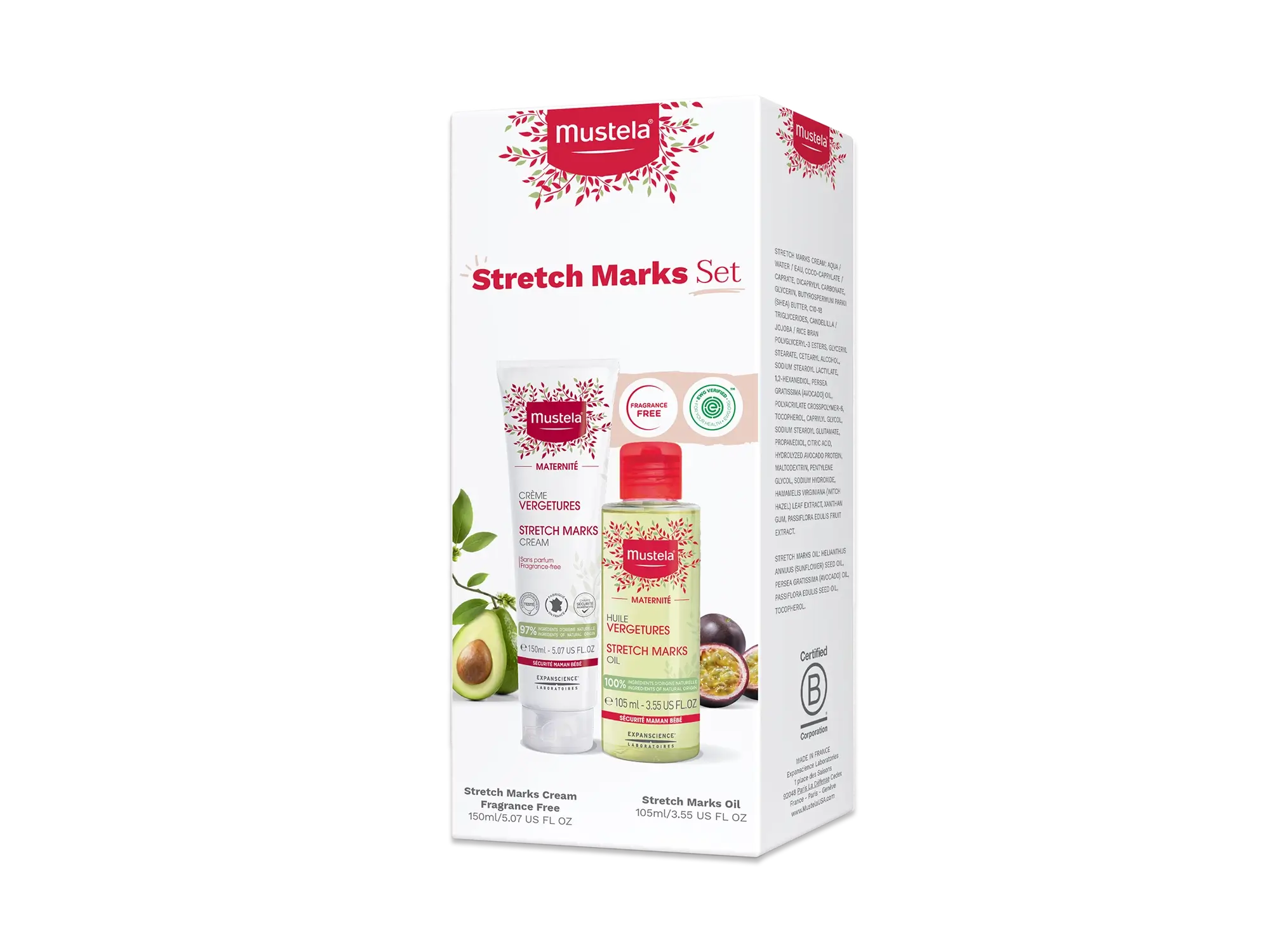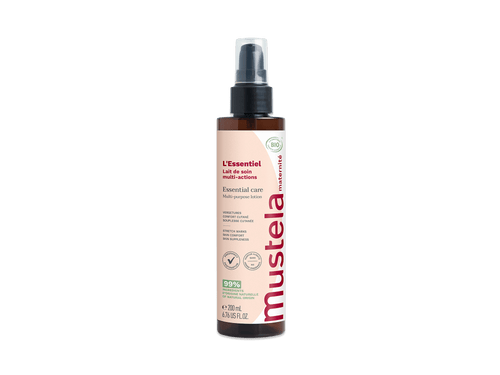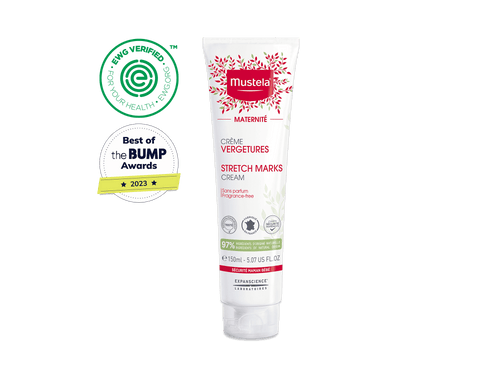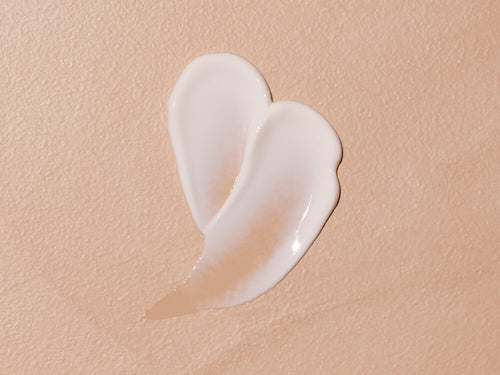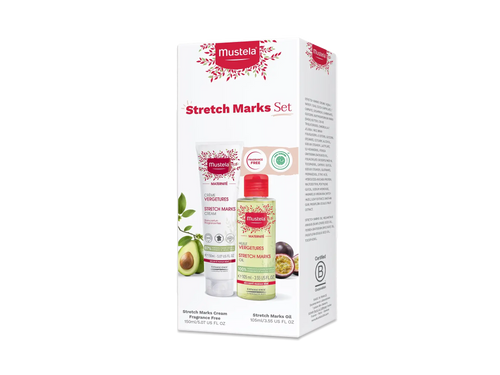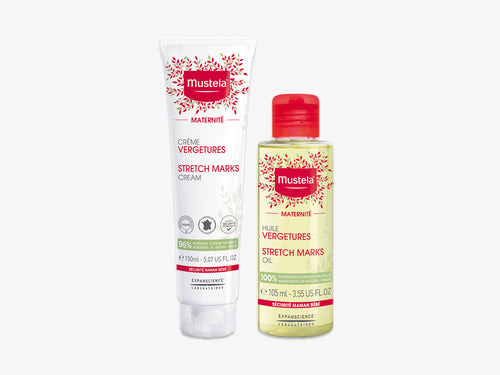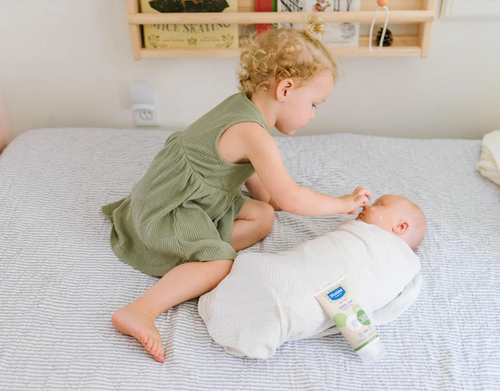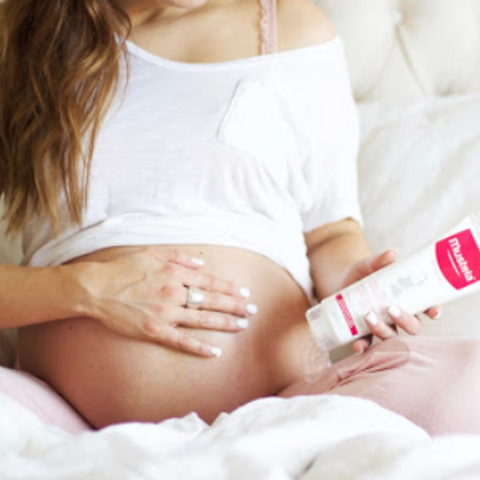Did you choose to breastfeed? Whether you're exclusively nursing, supplementing with formula, or pumping, every mother’s feeding journey is unique. What matters most is that your baby is well-fed, happy, and healthy.
One of your first nurturing acts as a new mother will likely be feeding your baby. And as natural as breastfeeding is, you may still worry and stress about providing the proper nutrients for your little one.
You probably also have a million questions about how it all works and how to do it correctly. Our best advice: relax, you and your baby will get the hang of it eventually.
But to help calm your worries, we’ve put together a list of the 40 best breastfeeding tips for new mothers.

Breastfeeding Tips For New Mothers
1) Anticipate Your Baby’s Desires
Rather than waiting for your baby to cry, you can anticipate their needs by watching for a few tell-tale signs. When your baby is hungry, they may:
- Turn or raise their head repeatedly
- Open and close their mouth
- Stick out their tongue
- Suck on whatever is near
If you see your baby making these moves, offer your breast right away. Your baby will be happy that they don’t have to struggle to get your attention, and you’ll build a level of intimacy that will deepen your mother/baby relationship.
2) Let Your Baby Determine How Often And How Long To Nurse
Your baby knows their needs better than you do right now. Let them determine how often to nurse. Don’t set a predetermined interval between feedings and then deny your baby food just because not enough time hasn’t gone by.
On the other hand, there’s no need to wake a sleeping baby to feed them simply because three hours have passed. Let your sleeping baby lay peacefully and feed them when they wake.
Similarly, let your baby determine how long to nurse.
Remember, your little one knows how much they need better than you do right now. Don’t worry if nursing time only lasts ten minutes, and don’t panic if it stretches on for forty-five. Some babies are fast eaters, while some like to take their time.
3) Get Comfortable While Nursing
You’re going to be spending a significant amount of time holding your baby to your breast while they feed.
If you do this in an unsupported sitting position, it can get uncomfortable quickly. Additionally, trying to maintain an uncomfortable position for a prolonged period of time can lead to significant back, shoulder, and neck pain.
Not to mention the constant squirming and moving on your part can disrupt your baby’s breastfeeding and result in irritability and increased hunger. That’s why it’s so important for you to be comfortable throughout the process.
We recommend one of two positions for comfortable breastfeeding:
- Lie on your side with your baby facing you
- Sit in a reclined position with your baby lying in your arms
A bed or a large couch with plenty of pillows to support your back and arms make these positions ideal for breastfeeding.
Find the one that’s right for you but don’t be afraid to mix it up once in a while depending on your own needs. The more attentive you are to your own comfort, the more nursing sessions will be a pleasant break for both you and your baby.
4) Relax
In addition to making sure you and the baby are comfortable while nursing, try your best to relax. Your baby can sense if you’re tense and nervous about breastfeeding, and they won’t latch on correctly. Your baby can’t relax if you’re not relaxed.
Examine your environment as well. If you’re in a stressful environment or an environment that makes you uncomfortable, opt for a change of scenery.
Maybe spend a few minutes before nursing to give yourself a pep talk. Take a few slow, deep breaths. Visualize your happy place. This is supposed to be an enjoyable time of bonding with your new bundle of joy, not a stressful one.
5) Help Your Baby Find The Right Position

Through the course of breastfeeding, your baby will likely find the position that’s best for them. Pay attention to this position so that you can make it easier to get into quickly.
Every baby is different, but there are a few general guidelines that you can use to find a position that works for both you and your baby.
- Your baby should be positioned so that their mouth is level with your nipple.
- They should not have to turn their head much, if at all.
- Their head should be tilted backward slightly.
- If possible, they should latch onto the entire areola, not just the nipple.
- Their chin should be right up against your breast so that their nose is clear.
First and foremost, don’t force these positions. Your baby may prefer a slightly different position. Just let it happen naturally while you make sure that your baby is comfortable and can breathe while they nurse.
6) Don’t Be Alarmed, Leaking Is Natural
In the first few weeks of breastfeeding, it’s common for milk to leak from your breasts. Don’t be alarmed; this is completely natural. It can happen when you hear another baby cry, when your baby hasn’t nursed for several hours, when you think about your baby, or even when you feel a strong emotion.
This leaking will eventually lessen or disappear completely as your baby continues to nurse. In the meantime, simply place a nursing pad in your bra to absorb the leaks.
7) Take Care Of Your Skin
The skin of your breasts is very delicate. With regular nursing, your skin can become dry, chapped, irritated, and even cracked over time. This can make breastfeeding a painful experience. Luckily, you can protect against chapped, cracked skin by taking a few precautions.
- Don’t overwash. One or two showers a day with a gentle cleanser is plenty.
- After a feeding, pat your breasts dry with a soft cloth.
- Let your breasts air out periodically to avoid irritation from clothing.
- After feeding, apply a healing product, like Organic Nursing Comfort Balm.
Taking care of your skin with a healing product is one of the best ways to keep the breastfeeding process enjoyable for both you and your baby. When you’re comfortable, your baby will be comfortable, and you can use nursing as a way to deepen the already strong bond you feel for your newborn child.
8) Don’t Worry, You’ll Have Enough Milk

Milk production depends primarily on your baby’s needs. Your little one’s sucking stimulates the release of the hormones prolactin and oxytocin which further stimulate milk production. But it doesn’t start with your baby’s first suckle. Your breasts have been preparing to give milk since the start of your pregnancy.
So don’t worry, you will have enough milk. The more your baby nurses, the more milk you’ll have.
Note: During the first two or three days of breastfeeding, you may notice a thick yellowish-orange fluid coming out of your breasts. Don’t panic.
That fluid is colostrum, and it’s just what your baby needs at the moment. Colostrum is very nutritious and contains high levels of antibodies. These antibodies boost your baby’s immune system so they can fight off infection.
9) Look For Signs That Breastfeeding Is Going Well
Your baby’s behavior and health will tell you if nursing is going well or not. Don’t worry if you don’t see these signs all the time. Even just one is an indication that your baby is well-fed.
Your Baby Should Suck Eagerly And Swallow Regularly
Keep in mind that when your little one first starts feeding, they’ll swallow each time they suck. As milk decreases, they get full, or fall asleep, swallowing will decrease. That’s perfectly natural and nothing to worry about.
Your Baby Should Release Your Breast At The End Of Nursing
At the end of a nursing session, your baby should release your breast and appear drowsy. Their skin will be a healthy pink, and their muscles will be totally relaxed.
Your Baby’s Diapers Should Be Very Wet
Your little one will likely have four to eight bowel movements each day during the first few weeks of life. This is due primarily to colostrum consumption.
As time goes on, your little one will have fewer and fewer bowel movements. There may come a time when they only have one bowel movement or less per day. As long as those bowel movements remain soft and the diapers are wet with urine, there’s no need to be worried about constipation.
You Baby Is Gaining Weight Regularly
If you’re wanting to monitor your little one’s weight, you can certainly do so. However, it’s usually not necessary beyond their monthly weigh-ins at the pediatrician.
10) Avoid Engorgement
Engorgement is a painful swelling and hardening of your breasts that occurs when you produce more milk than your baby consumes. Engorgement is most frequent when your milk first comes in right after your baby is born.
The swelling can actually make it more difficult for your baby to feed, which only increases the likelihood that engorgement will continue. The best way to avoid this painful condition is to nurse your baby as often as possible.
If engorgement persists, you can hand-express breast milk by gently massaging the areola between your fingers. You may want to express milk under a warm shower, which helps the milk flow more easily. If you don’t succeed, try using a pump, and continue until your breasts soften and feel comfortable again.
11) Ask For Help
Reading and taking a class about breastfeeding is one thing — actually breastfeeding on your own is a different story. So ask for help within that first hour after birth when you’ll want to start breastfeeding your little one.
In your local hospital, a nurse will check on you and your baby while breastfeeding. She may even offer some advice and help you. But if you’re still having trouble, the lactation consultant can help further...but you have to ask. Otherwise, they won’t know your needs.
While you’re still in the hospital, the lactation consultant can come in to see for herself how your baby is latching on. She’ll be able to give you guidance and advice on how to position your baby and your body.
The lactation consultant is more than happy to help you and guide you in your breastfeeding journey. We know it can be a little nerve-wracking leaving the hospital and the support of the nurses, but feel free to call your local hospital and ask to speak to the lactation consultant with any questions you may have.
Breastfeeding might be uncomfortable at first when your baby latches on, but it shouldn’t be a painful experience for you. If breastfeeding is hurting badly enough to make you cringe, seek out help from a professional.
12) Stay Hydrated
Last, but certainly not least, stay hydrated. We can’t stress enough how important this tip is for you and your baby. After all, you’re still eating and drinking for two!
Water replenishes the body, so a good rule of thumb is to drink a glass of water whenever you breastfeed. Yes, every single time. This will ensure that your body can make enough milk and that you’re staying hydrated.
13) Pay Attention To Your Eating Habits
Going along with our previous point, you still have to watch what you eat after the baby is born if you are breastfeeding. You’re supporting your baby’s development, so it’s important to eat plenty of nutrient-dense foods.
Breastfeeding moms also need 500 extra calories a day. So plan your meals and snacks with this number in mind.
Some beneficial foods for a balanced diet include:
- Eggs for choline
- Beans for iron
- Leafy greens for vitamin B
- Healthy fats like salmon and avocado
14) Take A Postnatal Vitamin
Just when you thought you were done taking those humongous pills every day...not so fast.
Your body is still replenishing from giving birth, and a daily multivitamin will ensure that you and your baby are getting the nutrients you need.
Here’s what to look for in a postnatal vitamin:
- A full-spectrum multivitamin with key nutrients, including folate, choline, iodine, selenium, zinc, and vitamins A, C, and D
- Omega-3 fatty acids with DHA + EPA to support your mood and benefit your baby’s development
- Collagen + biotin
- Ashwagandha + L-theanine to help maintain emotional balance
Note: Always consult your doctor before beginning any new supplements.
15) Have The Right Nursing Equipment
Some items make breastfeeding more convenient for you and comfortable for baby. These could include:
- Nursing pads
- Breast pump
- Storage pads
- Nursing pillow
- Nursing bra
Find what works for you and your baby so you can both have a positive breastfeeding experience.
16) Limit Toxins
Maintain those non-toxic pregnancy habits during postpartum, too. Harmful substances can be passed to your baby through breast milk. You should still be limiting cigarettes, alcohol, high-mercury fish, and caffeine.
17) Gradually Wean Your Baby From Breastfeeding

The recommendation is to breastfeed for the first six months, followed by continued breastfeeding for the next six months as you introduce solid foods.
As you start to wean, those “feel good” hormones that your body produces, oxytocin and prolactin, are being taken away, so you may understandably encounter some mood changes. Dropping to one feeding per day at first can help ease the transition.
18) Educate Yourself Before Your Baby Is Born
You may think that breastfeeding comes naturally, but it’s different for every mom and can be overwhelming. Prepare yourself for all possibilities.
Knowledge is power. So taking the time to learn and understand the process and how your body makes milk will help you prepare and meet your goals.
You can take an online breastfeeding class, schedule a one-on-one prenatal breastfeeding consultant with a lactation consultant, or read a book to understand how the breastfeeding process works.
19) Understand That Every Experience Is Different
When a new mom thinks about breastfeeding, she may think that it’s the same for everyone. That’s certainly not the case, and that’s OK!
Even if you have successfully breastfed before, there are so many factors that can affect your breastfeeding journey.
Pregnancy, labor, and birth can impact how breastfeeding starts. Also, your baby’s gestational age at birth might make breastfeeding challenging in the beginning. And a baby who is experiencing jaundice might have difficulty breastfeeding as well.
No matter the cause of any challenges you might face, you can always consult a lactation specialist for help.
20) Seek Out Latching Tips
When it comes to latching, some general rules can help things go smoothly.
1. The “breast sandwich” is a technique in which you compress your breast with your hands so baby can gain a deeper latch.
2. Nipple to nose: When you start to breastfeed, line up your baby’s nose directly across from your nipple. Once they open their mouth, point your nipple to the roof of their mouth. There should be a small space between your baby’s nose and your breast, but their chin should always be pressing into it.
3. Keep Organic Nursing Comfort Balm on hand to keep your skin comfortable while nursing. With 100% naturally derived, food-grade ingredients, this balm helps protect your nipples while you and your little one master breastfeeding together.
21) Don’t Think Too Far Into The Future
Breastfeeding is a journey, so take it day by day. When you’re feeding every two to four hours while you’re sleep deprived, it can be overwhelming. But keeping your goals in mind and seeking out support when you need it can help you keep going.
22) Ask For Immediate, Uninterrupted Skin To Skin Contact
Experts recommend immediate uninterrupted skin-to-skin contact between mom and baby until after the first breastfeeding session. There are nine stages that your newborn goes through to latch and breastfeed. Any interruption during this nine-stage process can affect that.
The nine stages are:
- Birth cry
- Relaxation
- Awakening
- Activity
- Rest
- Crawling
- Familiarization
- Suckling
- Sleeping
23) Create Your Own Breastfeeding Space

It’s not always possible to breastfeed in a completely private space. But at least at home, try to find a quiet and cool place where you can focus on breastfeeding your baby.
Make it a personal space for you and your little one. Set it up with burp cloths, your breastfeeding pillow, snacks, water, books, and whatever else you may need or want.
24) Know That Breastfeeding Should Not Hurt
Yes, your nipples will most likely be sore for the first 10 or so days, but it should be soreness, not pain. If it’s pain that you’re experiencing or the soreness doesn’t go away after a couple of weeks, consult your doctor.
25) Include Your Partner

Don’t be afraid to include your partner in your breastfeeding journey. You’ll need emotional support during this time, and it also doesn’t hurt to have an extra set of ears for when you meet with the lactation specialist.
26) Use Both Of Your Breasts Each Time
A baby needs eight to twelve feeds in 24 hours for the first four to six weeks of life. It is helpful to use both breasts during each feeding session so baby can gain weight and you can build your milk supply.
27) Keep Baby Awake While On The Breast
If your little one gets distracted during feedings, a good trick is to take their upper arm and stretch it out or up and down to get them swallowing again. If needed, take them off your breast and wake them up before putting your baby back on to latch.
28) Keep A Hair Tie On Your Wrist
It’s a good idea to start your breastfeeding session on the breast that you ended on last. A simple way to remember which side to start on is to keep a hair tie on your wrist and switch it to the side you need to nurse from first.
29) Use A Breastfeeding Tracker App
If you’re struggling to keep track of things, try a breastfeeding tracker app. These apps can track the start times of each feeding, which breast the baby was on, and how long the baby was feeding for each nursing session.
30) Increase Milk Supply
The best way to increase your milk supply is to increase stimulation at the breast. This means nursing more frequently or effectively, pumping in-between nursing sessions, adding additional pumps after nursing, and learning how to use your pump more effectively.
Some say that taking herbal supplements can help increase your milk supply as well. But always consult your doctor before adding anything new to your routine.
31) Try “Chewelry” For Squirmy Hands
Once your baby hits the three-month mark, it gets hard for them to keep their hands to themselves. While nursing, they may grab for your jewelry, your hair, or whatever else is in reach.
Chewelry necklaces are made from food-grade silicone that your baby can play with while breastfeeding without hurting you, themselves, or the jewelry.
32) Avoid Underwires Or Tight Bras
Tight-fitting bras can result in sore breasts or painful lumps in the first 12 weeks of breastfeeding.
Instead, wear loose cloth nursing bras or shirts with a shelf bra built in. These are a comfortable option, and if you desire more shape or support, removable cups that easily slide into a loose cloth bra work great!
33) Don’t Forget About Your Shirt
Wearing nursing-friendly shirts makes your breasts more easily accessible to your baby. To save money, you can buy tops that you would wear when you aren’t breastfeeding, like a button-down or a zippered shirt. These are just as effective as maternity and postpartum-specific apparel.
34) Use Breast Milk Testing Strips For Alcohol
When you were pregnant, you may have missed social gatherings where you could indulge in a glass or two of wine. And now that you’re no longer expecting, you may want to enjoy the occasional drink.
The good news is there are strips you can use to test the presence of alcohol in your breast milk. They determine pH levels to let you know whether the breast milk is safe enough to give to your baby.
35) Pump Directly Into Your Storage Bag
If you are using storage bags for your breast milk, you can buy an adapter that pumps directly into the breast milk bags instead of pouring your milk into them from the bottles attached to your breast pump.
36) Prevent Your Baby From Biting
Your baby’s first tooth can appear after six months. If you’re concerned about little teeth while breastfeeding, keep your finger ready to break the suction, and remove your breast as soon as your baby’s rhythmic suckling stops.
37) Keep Your Fingers Away From The Areola
This is your baby’s territory, and you don’t want to be in the way of them going in with a wide open mouth.
38) Keep An Eye Out For Lumps Or Sore Spots
Lumps and sore spots can indicate the start of a plugged duct, which can lead to mastitis. If you are experiencing any of these symptoms, gently massage the area, feed your baby a little extra that same day on the painful breast, or switch up your breastfeeding position.
39) Prepare For A Lot Of Leaking
We mentioned this briefly above, but invest in breast pads. Stash them in the bathroom, your purse, your car, wherever you can. Leaking should subside around four months, but it’s always a good idea to keep Mustela Cleansing Wipes on hand to clean up any messes.
40) Try A Pacifier When Your Baby Is Fussy
If your little one is fussy and having a hard time latching to eat, try offering a pacifier first. This can calm them down and get them suckling so you can switch them to your breast.
Breastfeeding Tips: Taking It All In

We know breastfeeding can be overwhelming at times, but putting these breastfeeding tips above into practice will help you make the most of this time with your little one.
So pay close attention to your baby’s needs, get comfortable, and relax. Evaluate the signs that breastfeeding is going well, and make sure you’re staying hydrated.
And remember, there’s nothing wrong with asking for help. Your baby will thrive right before your eyes when you follow these tips!






